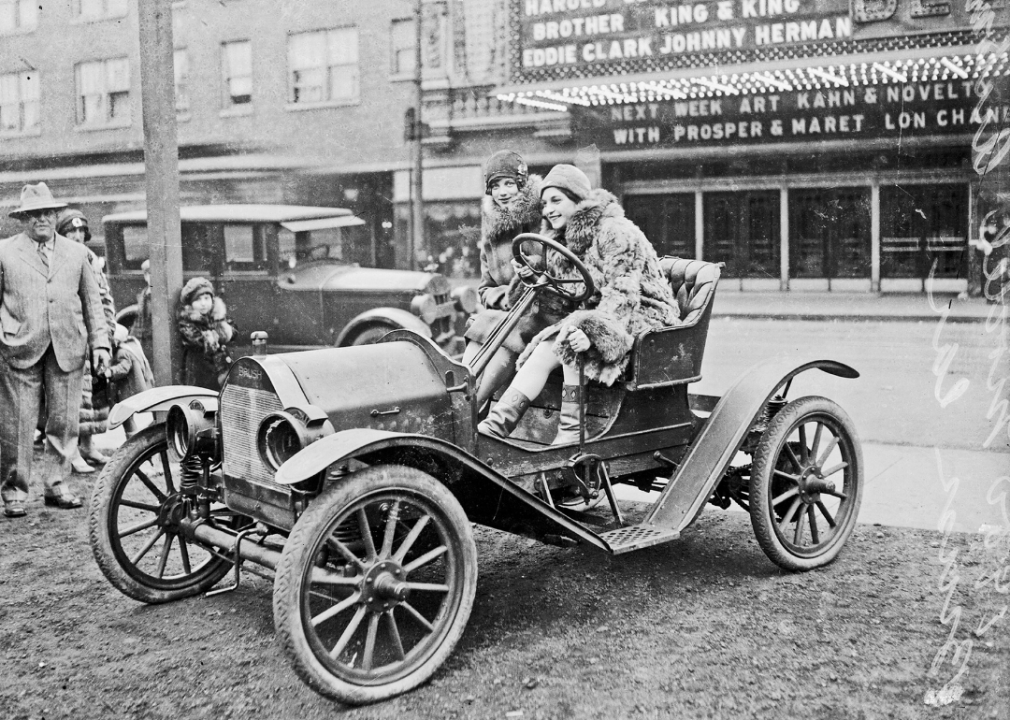20 photos of Chicago in the 1920s
Published 8:00 pm Friday, July 22, 2022
Chicago Sun-Times/Chicago Daily News collection/Chicago History Museum // Getty Images
20 photos of Chicago in the 1920s
The 1920s in Chicago were an exciting time. Having almost finished rebuilding after the Great Chicago Fire of 1871 that destroyed 3.5 square miles of the city, the Midwestern metropolis surpassed 3 million residents before the decade was out. In order to house and move all these newcomers, the city undertook massive infrastructure projects, including adopting innovative public transportation options and breaking ground on a number of new construction projects. Dozens of iconic buildings—Wrigley Building, Chicago Daily News Building, and Union Station, among them—were all completed during the decade.
There were also a number of cultural shifts taking place in the city. For starters, tens of thousands of Black Americans moved from the Deep South to Chicago. Their arrival here, inspired by the huge quantity of jobs available, brought about the Chicago Black Renaissance, a creative movement equal in importance to the Harlem Renaissance. Chicago was also home to the first documented gay rights organization in the United States, the Society for Human Rights, founded by German immigrant Henry Gerber in 1924. And of course, there was the rise of organized crime, brought about by prohibition and culminating in the St. Valentine’s Day Massacre of 1929.
It’s impossible to put into words exactly what life was like in Chicago during the 1920s, so Giggster combed historical archives to compile a collection of photographs that better illustrate the time period. From shots of daily life to important historical moments, these 20 photos exemplify 1920s Chicago.
![]()
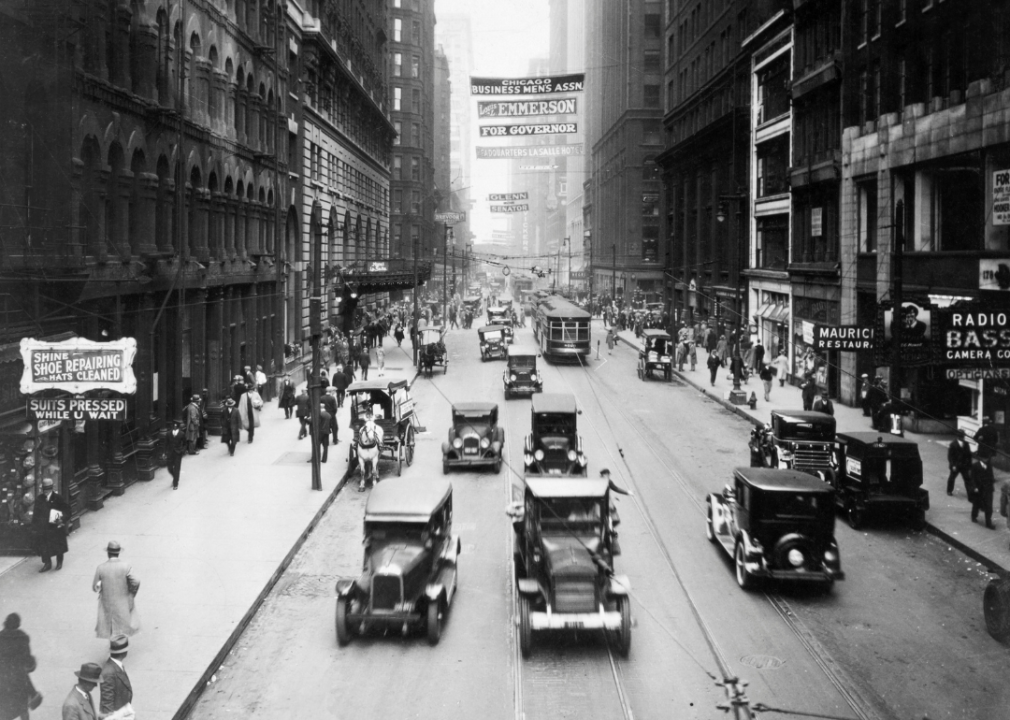
Schenectady Museum; Hall of Electrical History Foundation/CORBIS/Corbis via Getty Images
Chicago’s first traffic lights
As cars became more commonplace in the 1920s, traffic lights became essential in major cities like Chicago, where roads were shared by private automobiles, horse and carriages, and streetcars. Here, traffic flows smoothly on a downtown street thanks to the installation of newfangled electric traffic lights.
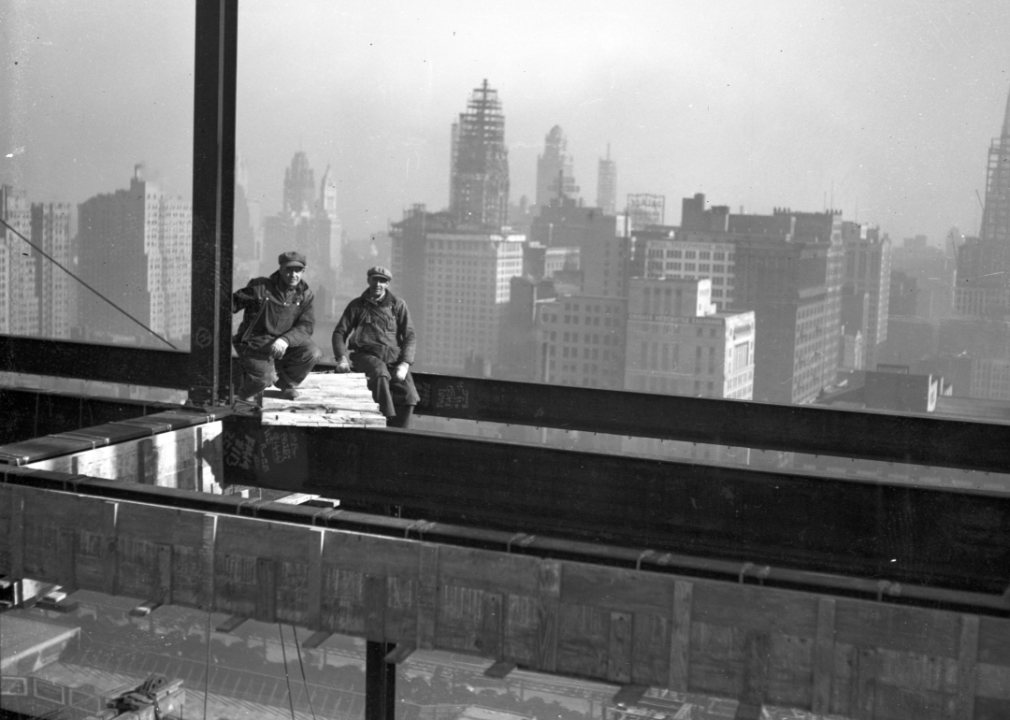
Chicago Sun-Times/Chicago Daily News collection/Chicago History Museum // Getty Images
The Chicago Daily News building
Two construction workers sit atop the steel frame of the Chicago Daily News building. Completed in 1929, the art deco building was opened by President Herbert Hoover, who pushed the button that started the presses.
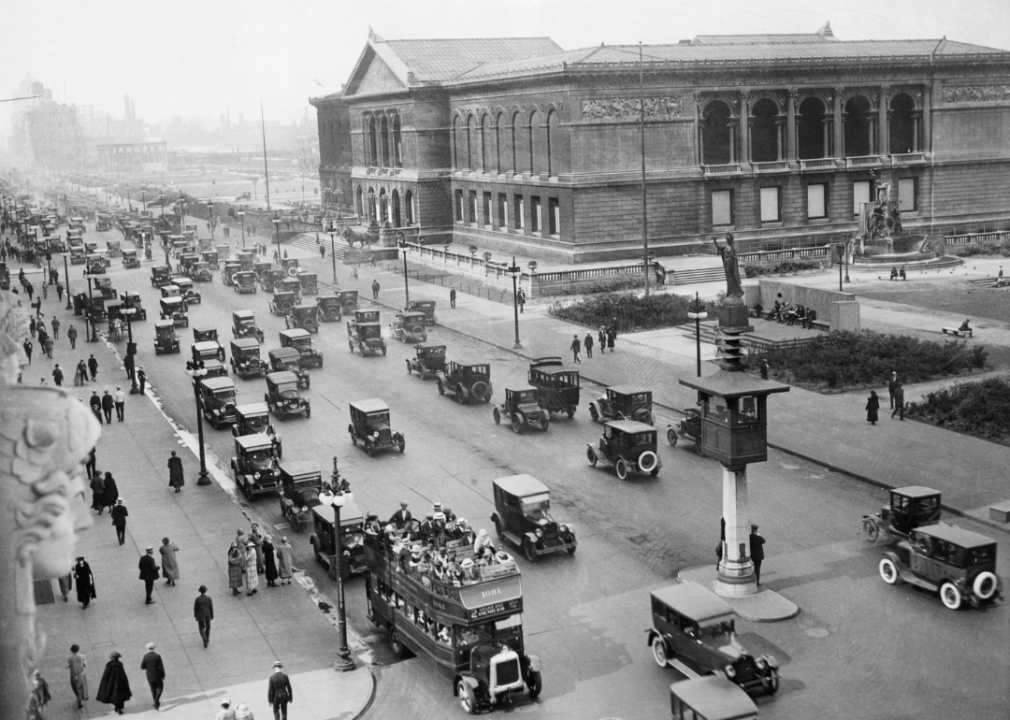
Bettmann // Getty Images
The Art Institute ‘crosses the tracks’
The Art Institute of Chicago first opened in 1879 and immediately became a landmark location for the Windy City. As seen here, the museum was the absolute pinnacle of attention on Michigan Avenue’s east side as you move south from the Chicago River. In the ’20s, the museum added a major expansion, which bridged the railroad tracks that bordered its east wall, in an effort to house its growing collection. Today, those tracks remain in service and the museum’s extension features large windows that allow visitors to see the service traffic below.
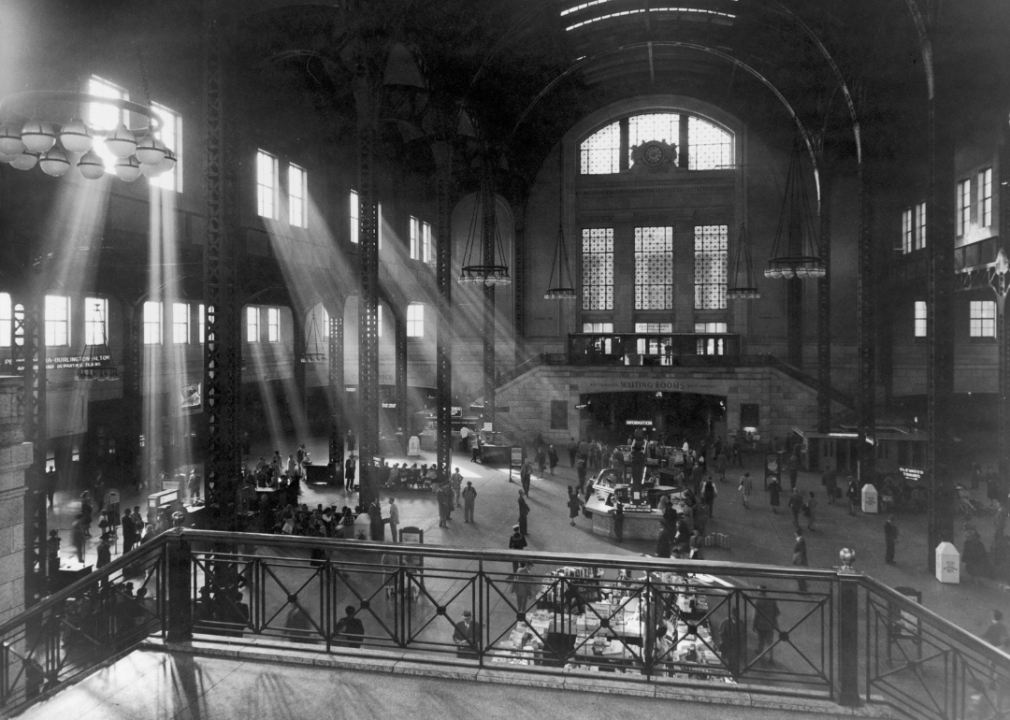
Archive Photos // Getty Images
Union Station
Following 10 years of construction, Chicago’s Union Station opened in 1925. The third-busiest station in the country to this day, the beaux arts building cost $75 million (or around $1 billion today) to complete.
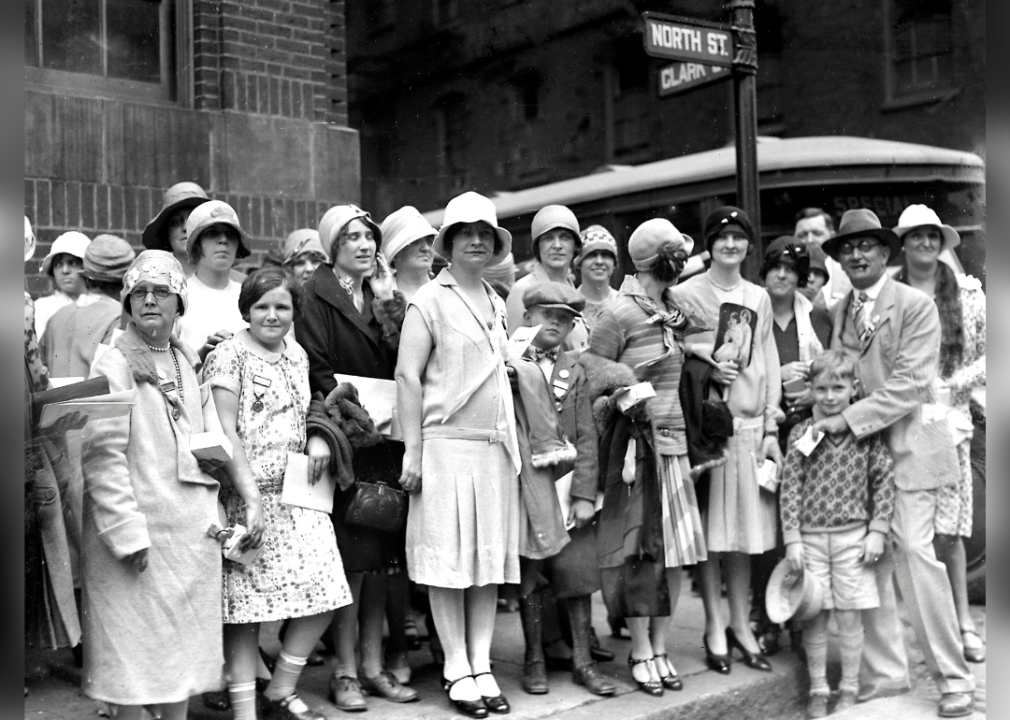
Kirn Vintage Stock/Corbis via Getty Images
CTA Motor Buses
In the 1920s, motor buses were a relatively new addition to Chicago’s public transit system—the first motor bus route began in 1917. Here, a group of riders waits at a bus stop on North and Clark Avenues.
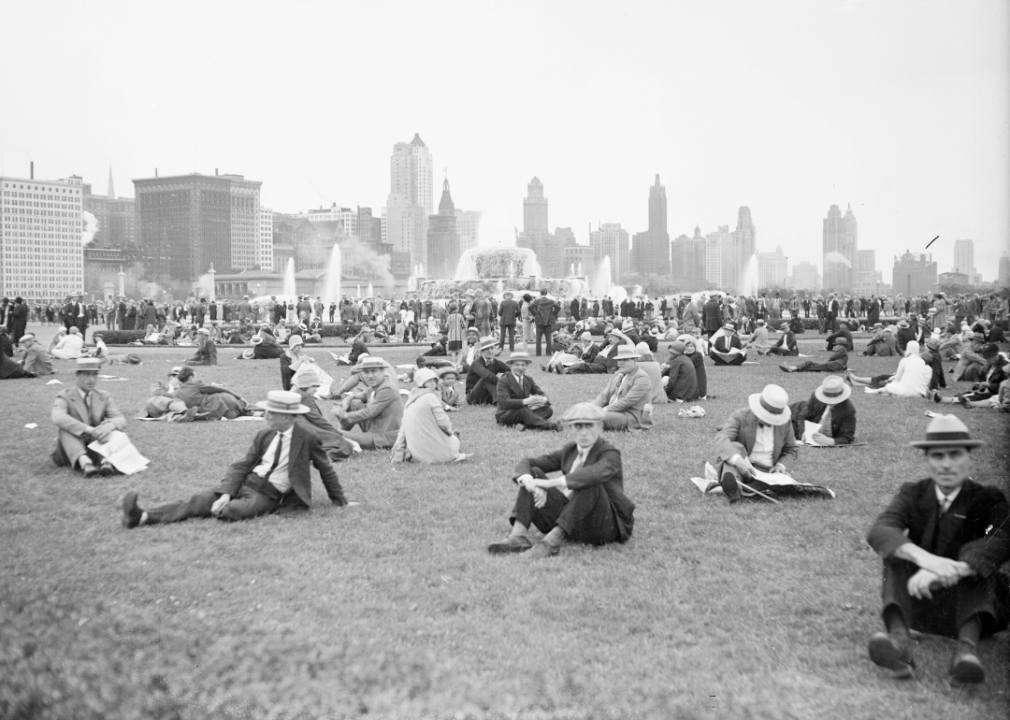
Chicago Sun-Times/Chicago Daily News collection/Chicago History Museum // Getty Images
The Graf Zeppelin
In 1929, the Graf Zeppelin made the first passenger-carrying flight around the world. During this record-setting journey, the aircraft passed over Chicago, and here, spectators gather on the Grant Park lawn, hoping to get a glimpse of the historic moment.
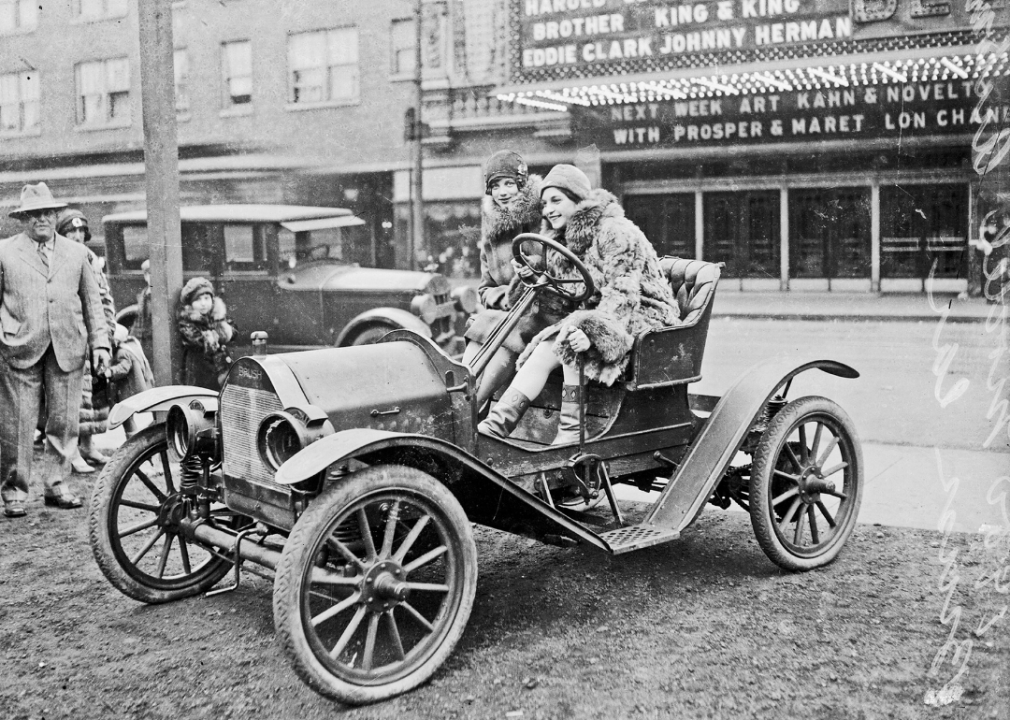
Chicago Sun-Times/Chicago Daily News collection/Chicago History Museum // Getty Images
Liberated ladies
The 1920s, with their looser morals and more relaxed politics, brought new levels of independence for women. Here, two liberated ladies exploit those newfound freedoms by taking their car out for a joyride.
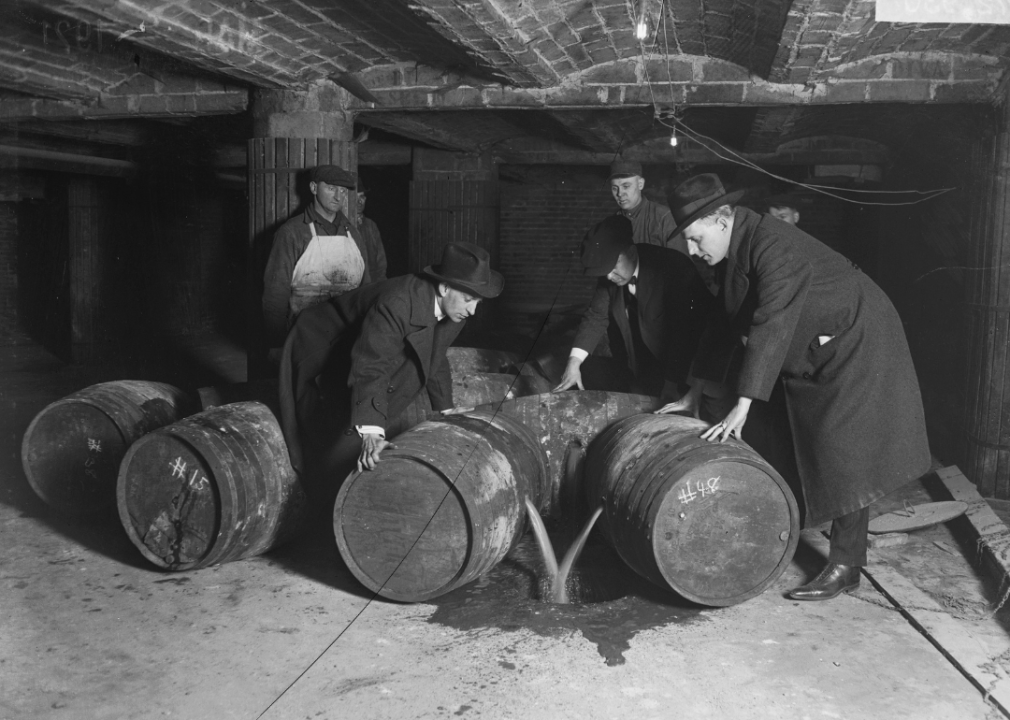
Chicago Sun-Times/Chicago Daily News collection/Chicago History Museum // Getty Images
Prohibition in Chicago
Prohibition dealt a serious blow to Chicago’s economy, as saloon licensing fees had previously accounted for nearly 25% of its overall revenues. Here, a group of men dispose of now-illegal spirits shortly after the law went into effect.
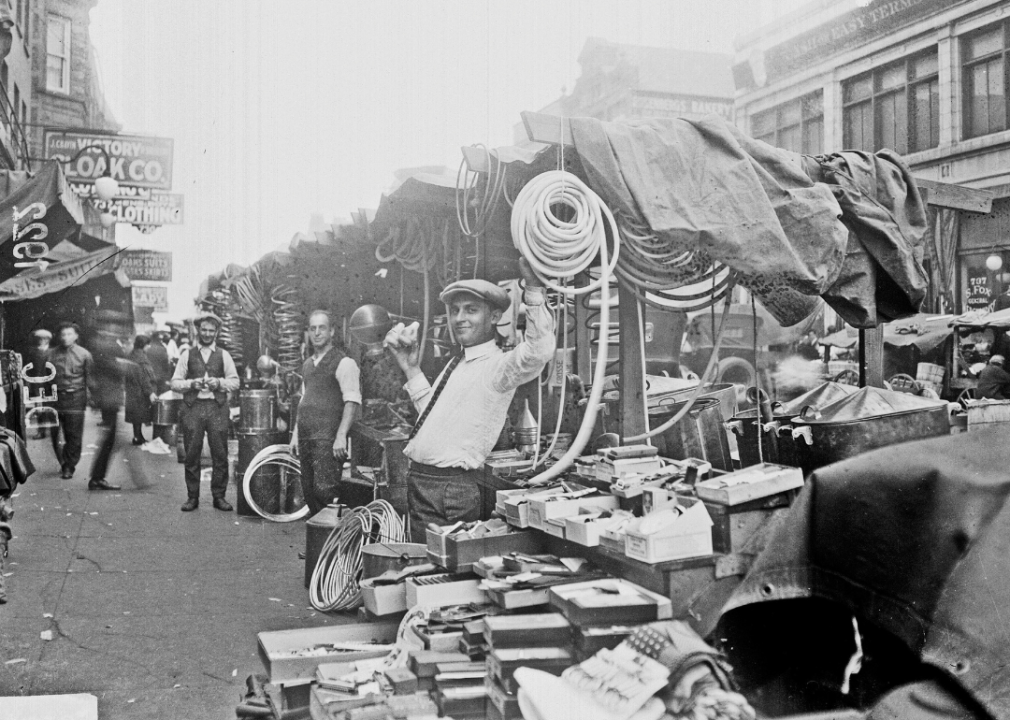
Chicago Sun-Times/Chicago Daily News collection/Chicago History Museum // Getty Images
The Maxwell Street Market
The Maxwell Street Market, a precursor to modern-day flea markets, has been a Chicago staple since the 19th century. Above, a group of men (likely all immigrants) stand in front of booths selling all types of wares.
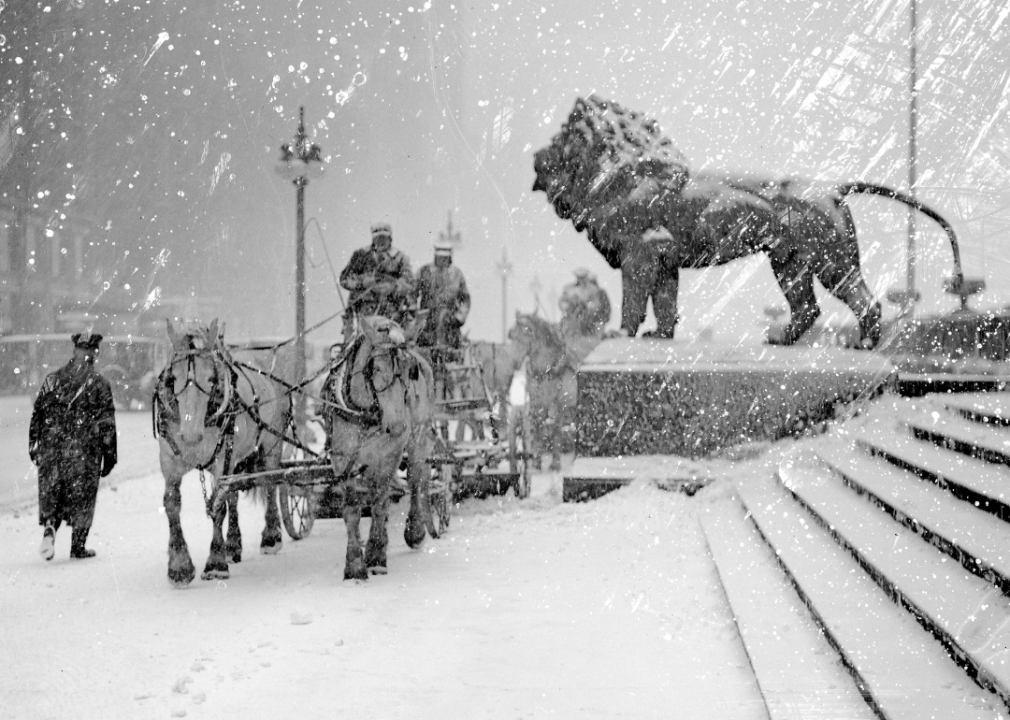
Chicago Sun-Times/Chicago Daily News collection/Chicago History Museum // Getty Images
A brutal winter
One of its most brutal winters in recorded history, 1925 brought a jaw-dropping 52.3 inches of snow to the Midwestern city. Here, a horse and carriage attempt to navigate an especially brutal snowstorm.
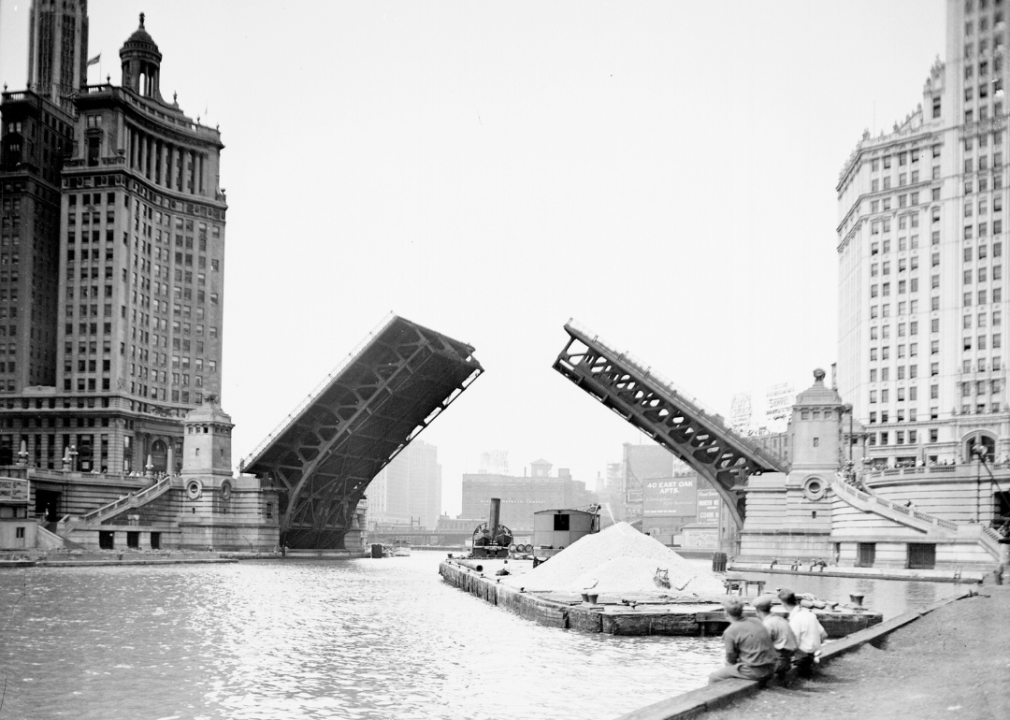
Chicago Sun-Times/Chicago Daily News collection/Chicago History Museum // Getty Images
The DuSable Bridge
A barge passes under the Michigan Avenue Bridge (or the DuSable Bridge). When it was first opened in 1920, the bridge was said to be the only one in the world with two decks, both of which were at highway level.
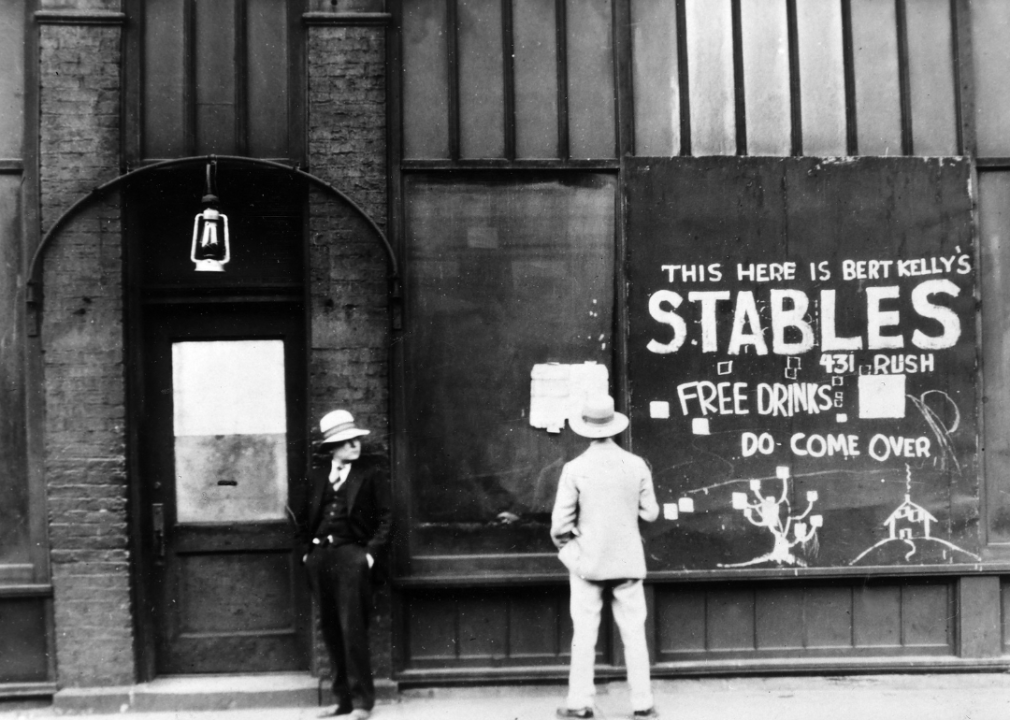
James E. Abbe/ullstein bild via Getty Images
Bert Kelly’s Jazz Stables
One of the most popular jazz clubs in Chicago during the 1920s, Bert Kelly’s Jazz Stables hosted icons like Joe “King” Oliver and the Dodds Brothers. Its owner, the eponymous Bert Kelly, claimed to have both brought jazz to the city and coined the term jazz himself.
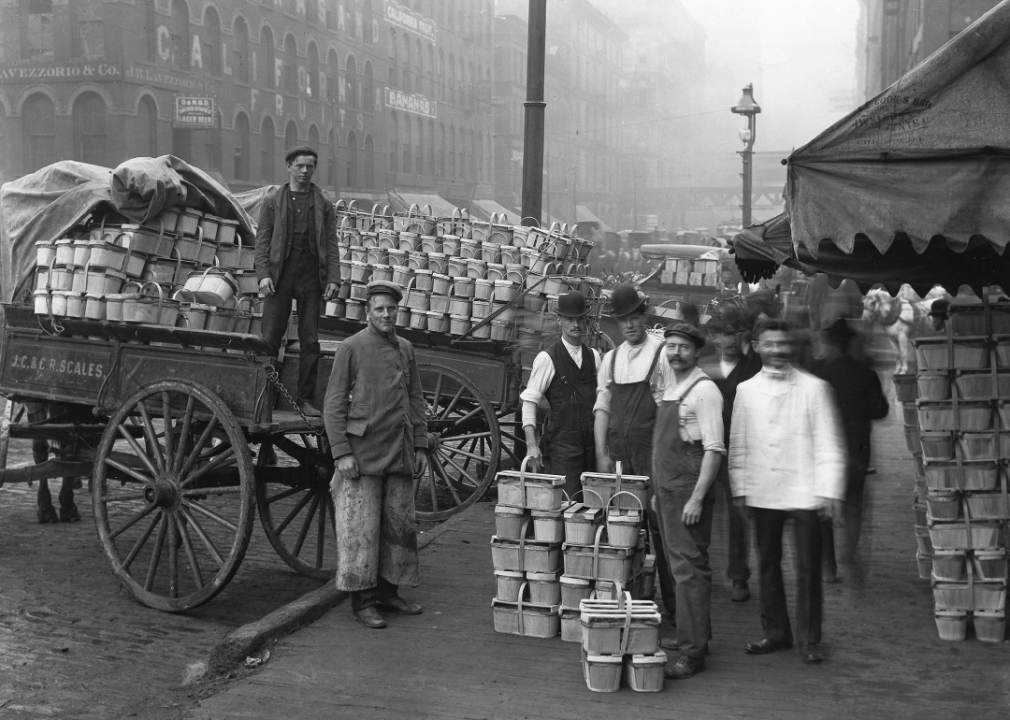
Chicago Sun-Times/Chicago Daily News collection/Chicago History Museum // Getty Images
South Water Street Market
Up until the mid-1920s, South Water Street was the primary produce market in the city of Chicago. The buildings that housed the market unloaded produce from riverboats on one side and sold to landlocked customers on the other. In 1925, the city relocated the market to a secondary location (though it kept the name) in order to construct Wacker Drive.
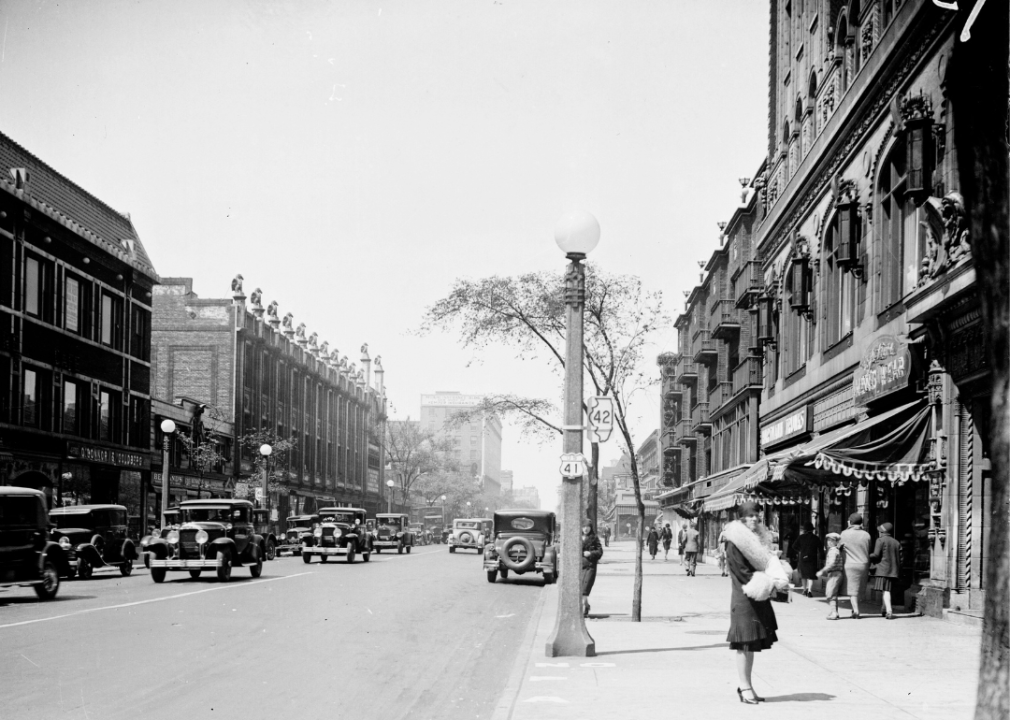
Chicago Sun-Times/Chicago Daily News collection/Chicago History Museum // Getty Images
Uptown
In the 1920s, Uptown was one of Chicago’s most luxurious neighborhoods. Home to great shopping, theaters, jazz clubs, restaurants, and hotels, the area was where one went to see and be seen (as evidenced by this woman’s eye-catching fur jacket).
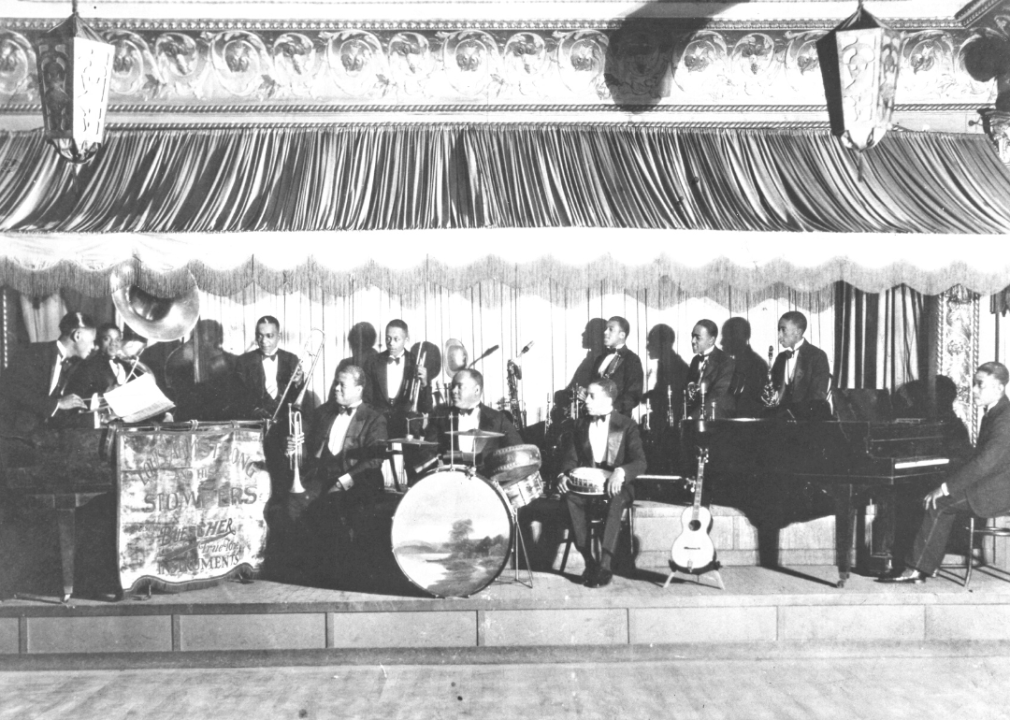
Photoquest // Getty Images
A black and tan club
Louis Armstrong and his orchestra perform at the Sunset Cafe, one of Chicago’s famous black and tan establishments. These venues allowed entrance to both Black and white patrons, making them one of the few places in the segregated city where folks of various races could mix.
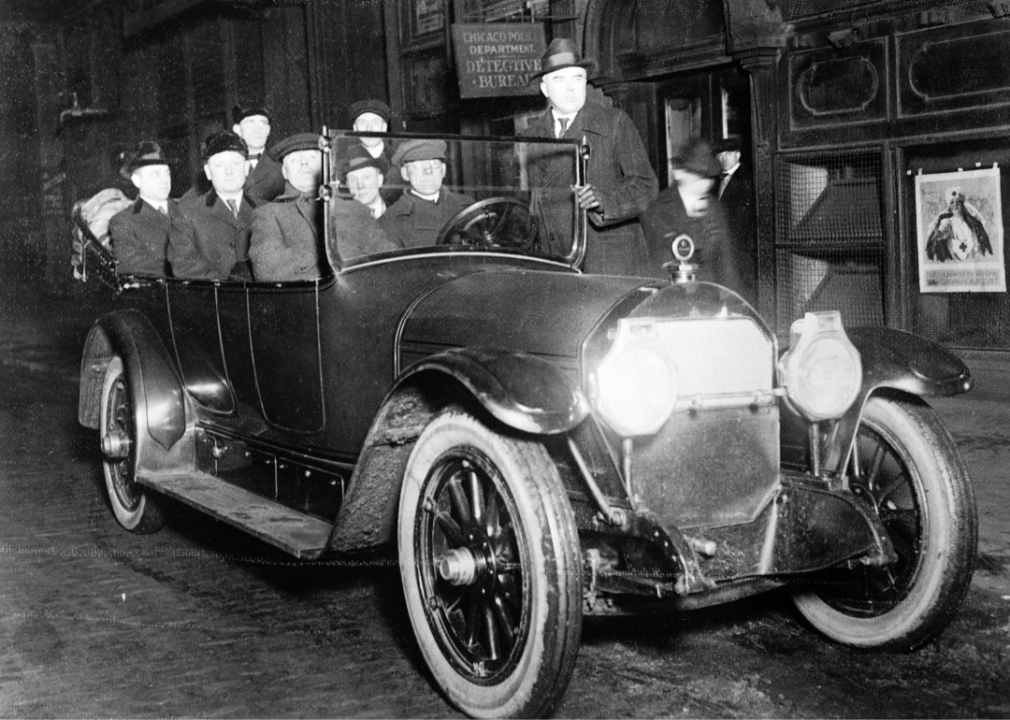
Bettmann
The Chicago PD
Organized crime grew exponentially in Chicago during the 1920s and ’30s. Groups of Chicago police officers, such as those seen here crammed into one of the force’s automobiles, were charged with tracking down these gangsters and putting an end to their nefarious activities.
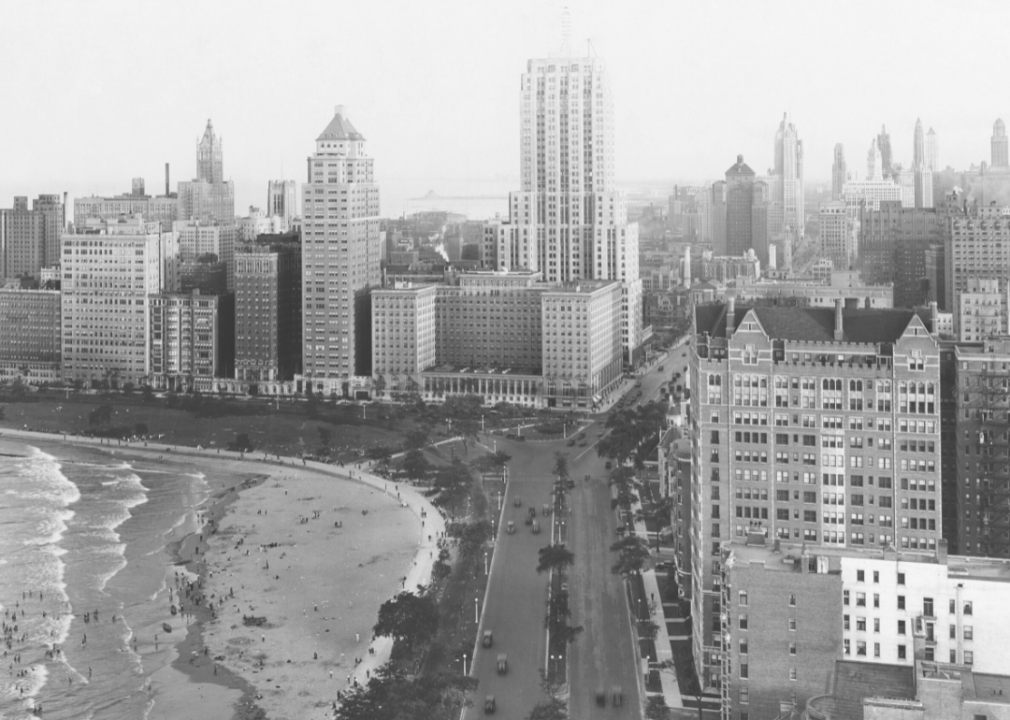
Chicago History Museum // Getty Images
The Palmolive building
Completed in 1929, the Palmolive Building (which stands in the center of this aerial photograph) served as the headquarters for the Colgate-Palmolive-Peet Company. In the ’60s, Playboy took over the lease, and in the early aughts, it was converted to residential apartments.
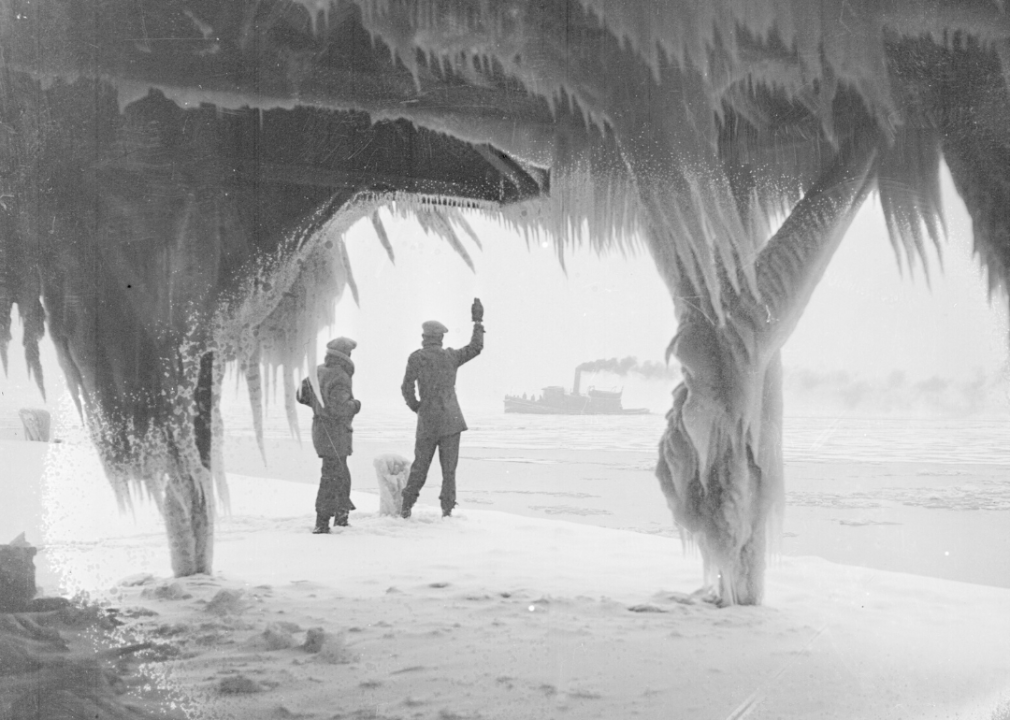
Chicago Sun-Times/Chicago Daily News collection/Chicago History Museum // Getty Images
A freezing job
Two men greet a steamship carrying passengers and goods during a winter cold snap. The water intake cribs behind them are completely covered in ice and snow.
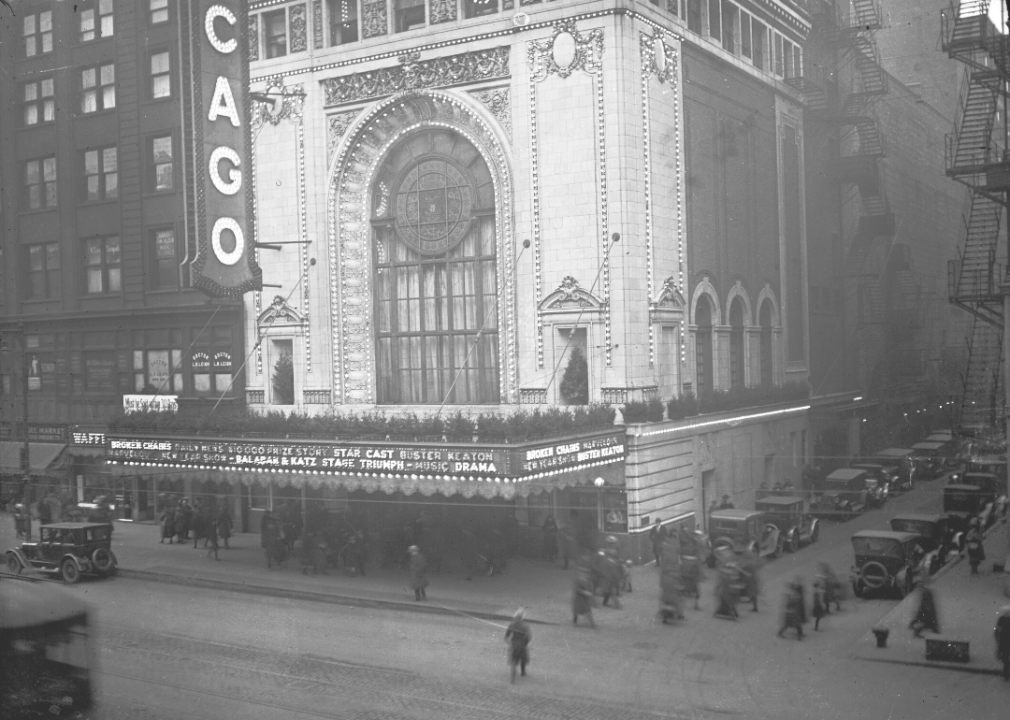
Chicago Sun-Times/Chicago Daily News collection/Chicago History Museum // Getty Images
The Chicago Theater
The Chicago Theater, one of the grandest theaters in the country, opened its doors in 1921. Built in a neo-baroque, French Revival style, the movie palace had 3,800 seats and billed itself as “the Wonder Theater of the World.”
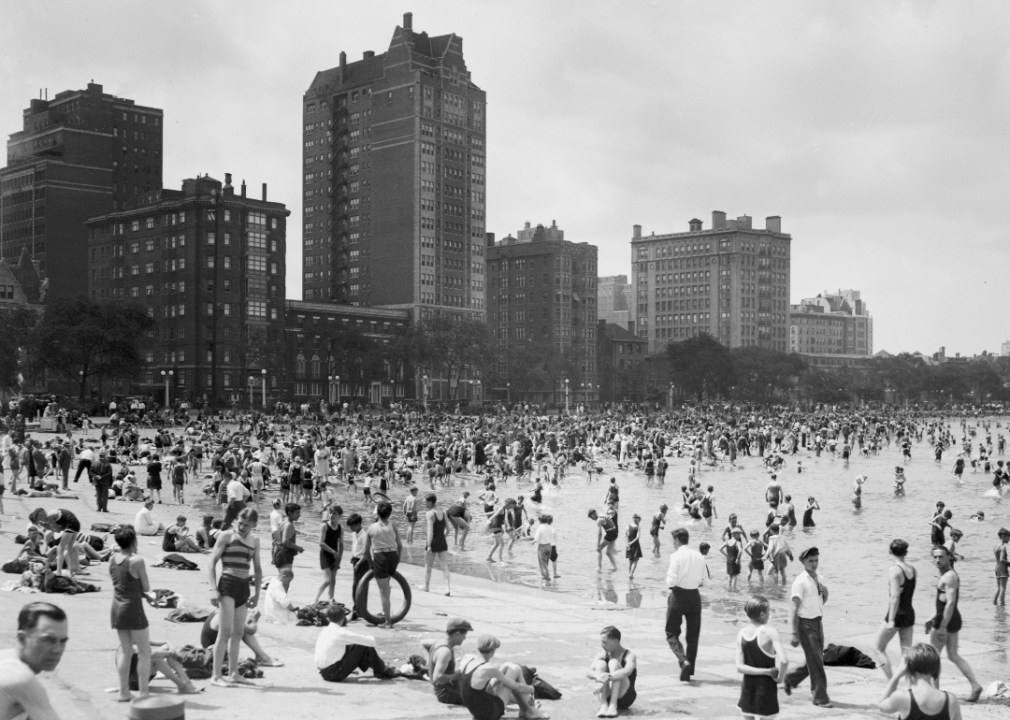
Chicago Daily News/Chicago History Museum // Getty Images
A dip in Lake Michigan
In an effort to beat the summer heat, Chicagoans gather on Oak Street Beach to take a dip in Lake Michigan. The second-largest of the Great Lakes, Lake Michigan isn’t necessarily warm, but its chilly waters would have provided a welcome respite from the humidity of the Midwestern season.
This story originally appeared on Giggster and was produced and
distributed in partnership with Stacker Studio.


